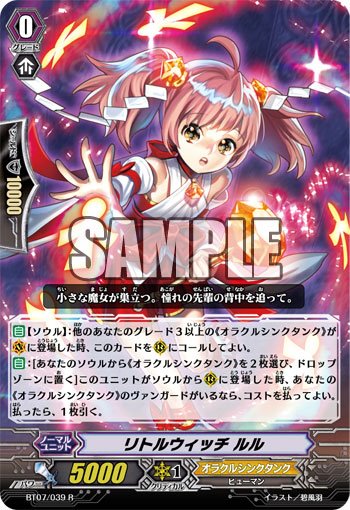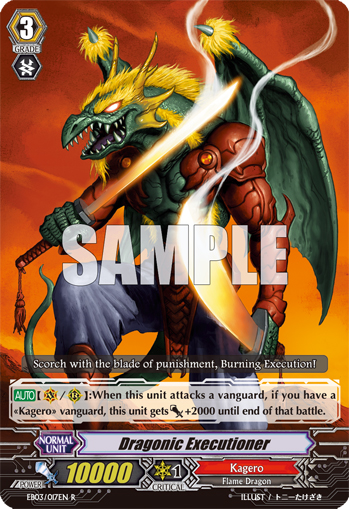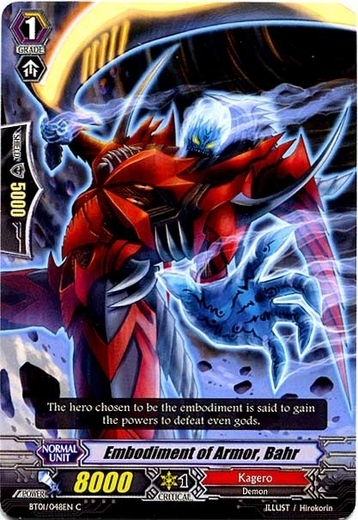Alright, so before I go off updating, one last article to help tie down a myriad of loose ends for myself so I won't have to explain as much later.
So, mostly from our experience from other card games, say Yugioh, when I say card advantage a system of +'s and -'s go off in your head. If I were to give you a card that gives you card advantage or takes away your opponent's, you'd call it a +. If I were to give you a card that takes away from your card advantage or gives your opponent card advantage, you'd call it a -. Overall, a relatively simple system of comparing a card's effect on your cardpool relative before the card's skills or abilities activated. So why am I going over this? Because it isn't the whole story.
 |
| She has ramen bowls for sleeves... |
And here's where I throw a monkey wrench into this, and introduce (or at least formalize) the concept of auxiliary advantage. What auxiliary advantage is is simply this: The underlying effects that cause or are caused by a skill's effect on the gameplay. Okay that made no sense...let's look back at Lulu. Little Witch Lulu calls itself out when a Grade 3 rides over it while its in the soul. Compared to regular starters, her skill is a raw +2 in total, compared to most other starters calling out for a +1, and any of the rest of their skills breaking even. So why, despite this, is Lulu not considered some sort of game-breaking ultra meta card? Any experienced Yugioh player will more than easily hang on to that extra +1 compared to other starters for dear life, but a comparison between a Soulless OTT and another deck can show that it's not nearly as influential on the game as one would think. Why is this, you may ask?
 And here's where we apply auxiliary advantage. Lulu, while yes is a raw +1 compared to the majority of starters, has a dire weakness that comes with her skill. She's called out when a Grade 3 unit rides, not when any unit rides directly over her. What this means is that it leaves a hole in your field for those first 2 turns that normally would be placed with a fielded unit. Wether a pseudo beater or a boost into the next stage, any other unit would be able to play a valuable role in setting up that early game advantage. That extra possible attack, that boost so that your Vanguard won't hit for pitiable numbers, is exactly what counteracts the prosperous extra +1 of Lulu's skill, creating balance to other units despite having greater raw advantage.
And here's where we apply auxiliary advantage. Lulu, while yes is a raw +1 compared to the majority of starters, has a dire weakness that comes with her skill. She's called out when a Grade 3 unit rides, not when any unit rides directly over her. What this means is that it leaves a hole in your field for those first 2 turns that normally would be placed with a fielded unit. Wether a pseudo beater or a boost into the next stage, any other unit would be able to play a valuable role in setting up that early game advantage. That extra possible attack, that boost so that your Vanguard won't hit for pitiable numbers, is exactly what counteracts the prosperous extra +1 of Lulu's skill, creating balance to other units despite having greater raw advantage.In case you didn't get it yet, let's drag in 2 notable units of another notable clan. Heatnail Salamander and Dragon Mage, Kimnara are 2 of Kagero's Grade 1 utility units and are near staple to almost all builds of Kagero. But a rather big question is, why? Closer inspection of their skills show they are perfect break evens, that is to say they neither gain nor lose any raw advantage. Along with this, they are both at 6K base. Why would Kagero players be inane enough to put 6K units that do nothing more but break even? Because that isn't the whole story behind them. Let's say I have a 10K Vanguard and a Kimnara behind a Nehalem primed and ready to retire a unit on my opponent's field, which looks like this:






 So, Kimnara's skill. Say I kill an Aermo behind Nehalem. Now my Nehalem would force 5K less and their Nehalem forces 5K less. Total break even. Say I killed the Aermo behind Goku. Goku forces out 5K less next to my Nehalem forcing 5K less. Still a break even. What if I killed Bahr though? With my 10K Vanguard, Bahr and Executioner will force out 15K shield should I have to guard. If I use Kimnara, Nehalem will be forcing 5K less, sure, but now Executioner will be forcing out 10K less than usual. This right here, is why Kagero players are inane enough to use Kimnara and/or Heatnail. Even though in terms of raw advantage, it is a break even, using their skills can allow for far better power distribution in your favor.
So, Kimnara's skill. Say I kill an Aermo behind Nehalem. Now my Nehalem would force 5K less and their Nehalem forces 5K less. Total break even. Say I killed the Aermo behind Goku. Goku forces out 5K less next to my Nehalem forcing 5K less. Still a break even. What if I killed Bahr though? With my 10K Vanguard, Bahr and Executioner will force out 15K shield should I have to guard. If I use Kimnara, Nehalem will be forcing 5K less, sure, but now Executioner will be forcing out 10K less than usual. This right here, is why Kagero players are inane enough to use Kimnara and/or Heatnail. Even though in terms of raw advantage, it is a break even, using their skills can allow for far better power distribution in your favor.
Forms of auxiliary advantage include, but isn't restricted to, card quality, advantage through battle (b.a.s.s. values), power distribution, multiple (if costly) attacks, and game pacing (and/or efficient guarding). So, why did I bring this up, one may ask. Well, it's simply from an observation, people have gotten really good at looking at raw advantage and being absolutely amazed at it, despite the lack of quality and auxiliary advantage that comes with it. I wanted people to see that there is more than just the raw numbers, that every move doesn't have to lead to +s or -s and that there is an advantage in controlling behind the scenes auxiliary advantage. Heck, some decktypes are based almost completely on doing so, like Spike Brothers who lack any major advantage engines but instead win their fights with auxiliary advantage in the form of advantage through battle. And so, the next time you see a card in a decklist or when you're building your own strategies, I ask to not just look at the raw advantage. Think of the many auxiliary advantages it may have, how it turns power distribution in your favor, how it can affect or overpower the tides of battle, the quality of its skill and the possibilities that can be reached with it. In the end, greater understanding of this element can lead to greater understanding of how many decks win, and far greater incite on cards and their effects on the gamestate.
*Disclaimer: I swear I didn't mean it when I called Kagero players inane. I just wanted to use the word because it sounds funny.
No comments:
Post a Comment